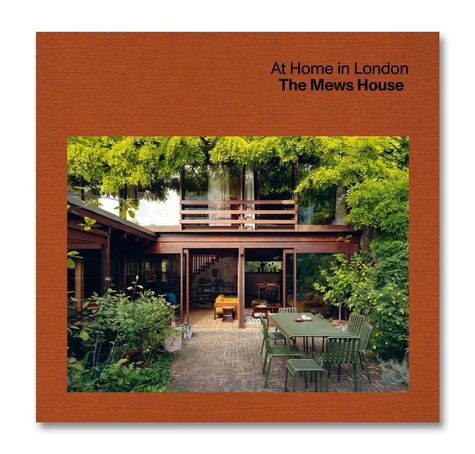At Home in London. The Mews House
Par :Formats :
Sous réserve de l'éditeur
La date de sortie de cet article a été reportée. Selon l'éditeur, il sera bientôt disponible.
- Nombre de pages180
- PrésentationRelié
- FormatGrand Format
- Dimensions29,0 cm × 28,0 cm × 0,0 cm
- ISBN978-1-915743-66-4
- EAN9781915743664
- Date de parution01/07/2025
- ÉditeurMack
Résumé
Set behind the grand houses of Georgian and Victorian London, intimately scaled mews originally served as accommodation for coaches and horses. ? After the advent of the motorcar in the early twentieth century, these secluded courts and alleys began to be converted for residential use, favoured by artists and bohemians. ? As they grew in popularity, mews also became popular as sites for new-build homes.
Often these were of a radically experimental nature, challenging established notions of domesticity in the heart of the ? historic city. At Home in London : The Mews House documents ? seventeen examples of this rich tradition dating from the 1960s to the present day, with new photography and extensive drawings. ? The self-built houses of architects feature particularly prominently,? including those of John Winter, Ted and Roz Cullinan, and Peter St John and Siw Thomas.
? Acclaimed architecture critic Ellis Woodman narrates the history of this perennially popular type from its early pioneers including potter Lucie Rie through the potential of the mews as a model for new residential development, exemplified by Peter Barber's monumental Edgewood Mews (2022) and Al-Jawad Pike's ? Chowdhury Walk (2023). This book is the second in a series on types of London housing, reflecting on the place of the home in the city in light of its longstanding housing crisis, following At Home in London : The Mansion Block (2023).
Often these were of a radically experimental nature, challenging established notions of domesticity in the heart of the ? historic city. At Home in London : The Mews House documents ? seventeen examples of this rich tradition dating from the 1960s to the present day, with new photography and extensive drawings. ? The self-built houses of architects feature particularly prominently,? including those of John Winter, Ted and Roz Cullinan, and Peter St John and Siw Thomas.
? Acclaimed architecture critic Ellis Woodman narrates the history of this perennially popular type from its early pioneers including potter Lucie Rie through the potential of the mews as a model for new residential development, exemplified by Peter Barber's monumental Edgewood Mews (2022) and Al-Jawad Pike's ? Chowdhury Walk (2023). This book is the second in a series on types of London housing, reflecting on the place of the home in the city in light of its longstanding housing crisis, following At Home in London : The Mansion Block (2023).
Set behind the grand houses of Georgian and Victorian London, intimately scaled mews originally served as accommodation for coaches and horses. ? After the advent of the motorcar in the early twentieth century, these secluded courts and alleys began to be converted for residential use, favoured by artists and bohemians. ? As they grew in popularity, mews also became popular as sites for new-build homes.
Often these were of a radically experimental nature, challenging established notions of domesticity in the heart of the ? historic city. At Home in London : The Mews House documents ? seventeen examples of this rich tradition dating from the 1960s to the present day, with new photography and extensive drawings. ? The self-built houses of architects feature particularly prominently,? including those of John Winter, Ted and Roz Cullinan, and Peter St John and Siw Thomas.
? Acclaimed architecture critic Ellis Woodman narrates the history of this perennially popular type from its early pioneers including potter Lucie Rie through the potential of the mews as a model for new residential development, exemplified by Peter Barber's monumental Edgewood Mews (2022) and Al-Jawad Pike's ? Chowdhury Walk (2023). This book is the second in a series on types of London housing, reflecting on the place of the home in the city in light of its longstanding housing crisis, following At Home in London : The Mansion Block (2023).
Often these were of a radically experimental nature, challenging established notions of domesticity in the heart of the ? historic city. At Home in London : The Mews House documents ? seventeen examples of this rich tradition dating from the 1960s to the present day, with new photography and extensive drawings. ? The self-built houses of architects feature particularly prominently,? including those of John Winter, Ted and Roz Cullinan, and Peter St John and Siw Thomas.
? Acclaimed architecture critic Ellis Woodman narrates the history of this perennially popular type from its early pioneers including potter Lucie Rie through the potential of the mews as a model for new residential development, exemplified by Peter Barber's monumental Edgewood Mews (2022) and Al-Jawad Pike's ? Chowdhury Walk (2023). This book is the second in a series on types of London housing, reflecting on the place of the home in the city in light of its longstanding housing crisis, following At Home in London : The Mansion Block (2023).

